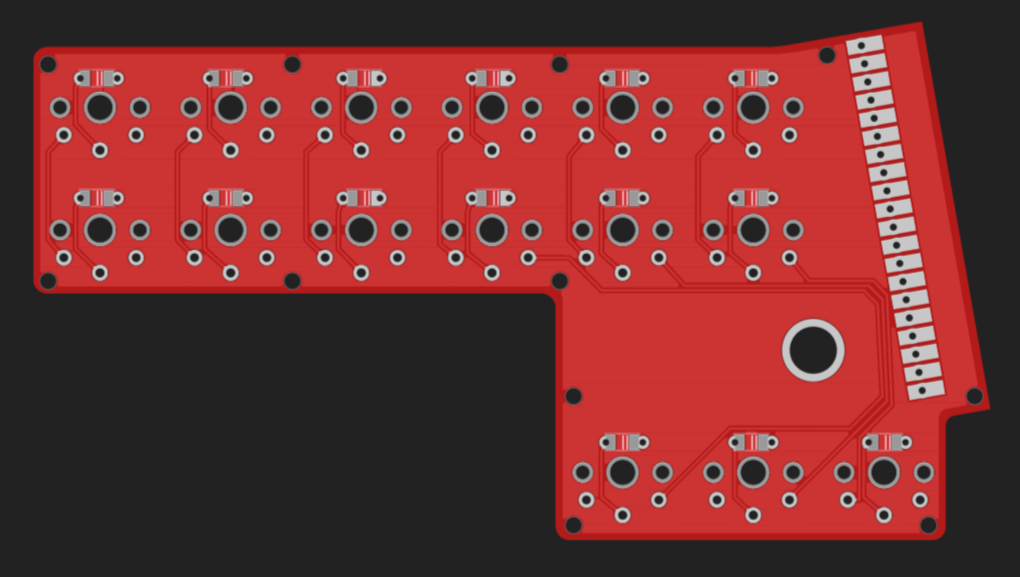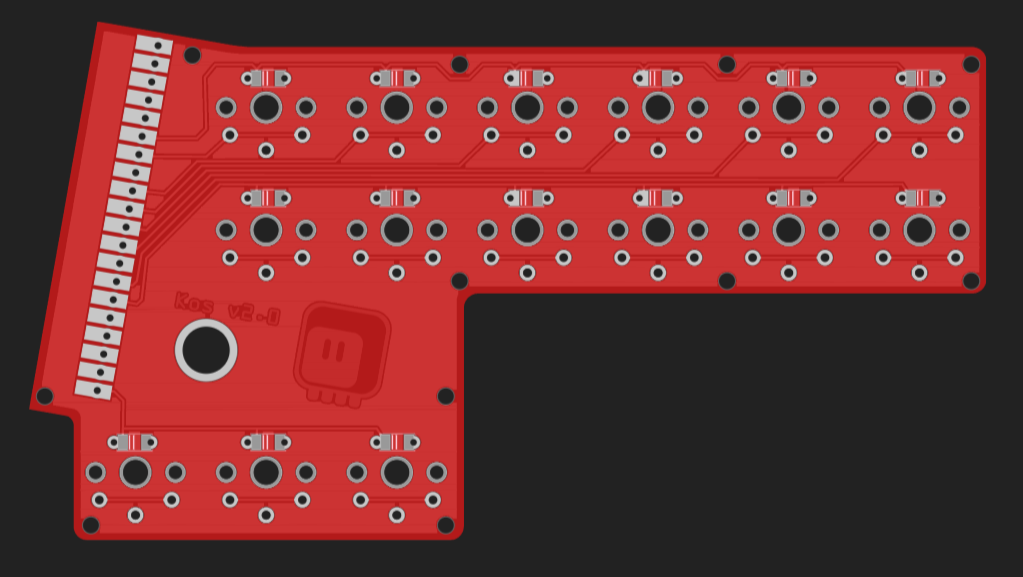In Kos 1.0 I used a pro mini board for the microcontroller, because that was the traditional way at the time, and it had the most widespread support. But it's an old microcontroller and the board is hard to get and expensive during the chip shortage, when the chip fabs are busy churning out chips for the missiles, so I decided to revisit this design and this time use something modern – the Raspberry Pi Pico, which is both cheap and available, at least until the military designs catch up with the new chip technology.
With more pins available on each side, and with the board being mostly symmetrical, I could simplify the design greatly. I no longer need to connect the rows across the two halves, and I can simply have all horizontal traces on one side, and all vertical traces on the other.


As with the previous versions, you need two of the PCBs to make one keyboard, and you connect them by soldering a pro micro in the middle. Since QMK now supports RP2040, there shouldn't be any problem with the firmware, but I will probably use the CircuitPython code I already wrote for the other stenotype, or maybe try and get the USB HID steno protocol working. The Pi Pico opens a lot of possibilities, even putting a simplified version of Plover together with the dictionary on the board itself, and emulating a HID keyboard should be doable.
As usual, the PCBs and parts should arrive within two weeks.
 deʃhipu
deʃhipu
Discussions
Become a Hackaday.io Member
Create an account to leave a comment. Already have an account? Log In.
Hey, I'm interested in building one myself. Could you share the gerbers for the v2 pcb?
Are you sure? yes | no